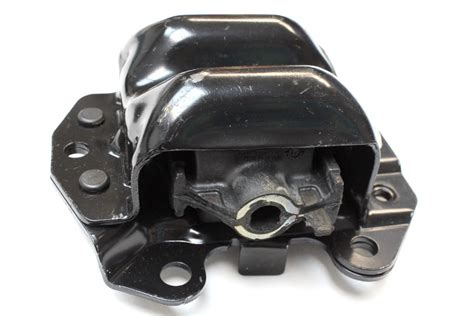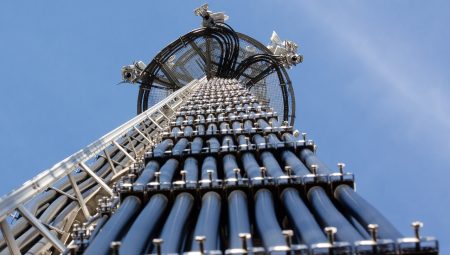Explore engine mount bushings: their importance, signs of wear, replacement tips, and how to choose the right ones for optimal vehicle performance.Engine mount bushings play a crucial role in the performance and longevity of your vehicle’s engine by providing a vital connection between the engine block and the chassis. These small yet essential components act as shock absorbers, reducing vibrations and noise while also maintaining proper alignment. As an often overlooked aspect of automotive maintenance, understanding engine mount bushings can save you from costly repairs and an unpleasant driving experience. In this blog post, we will explore what engine mount bushings are, their importance in your vehicle, how to identify signs of wear and tear, the process of replacing them, and tips for choosing the right bushings for your car. Get ready to dive into the world of engine mount bushings and keep your engine running smoothly!
What Are Engine Mount Bushings?
Engine mount bushings are essential components of a vehicle’s engine mounting system, designed to secure the engine to the vehicle’s chassis while simultaneously minimizing vibrations and isolating noise from the engine compartment, thereby contributing significantly to a smoother ride and overall vehicle comfort.
Constructed from durable materials, often a combination of rubber and metal, engine mount bushings act as cushions that absorb the shock and vibrations caused by the engine’s operation, ensuring that these forces are not transmitted to the vehicle’s frame, which could otherwise lead to discomfort for the occupants and potential wear on other components.
In summary, without the presence of engine mount bushings, the engine would directly connect with the chassis, leading to excessive vibration and noise, which could not only degrade the driving experience but also accelerate wear and tear on various parts of the vehicle, making these components crucial for maintaining both performance and comfort.
The Importance of Engine Mount Bushings
Engine mount bushings serve a crucial role in the stability and performance of a vehicle, primarily acting as the interface between the engine and the chassis, thereby absorbing vibrations, minimizing engine movement, and ensuring a smoother ride. These small yet essential components, typically made of rubber or polyurethane, provide cushioning that dampens the impact of road bumps, engine vibrations, and torque effects, which can be particularly pronounced during acceleration or deceleration, making them invaluable for maintaining driving comfort as well as improving the longevity of various engine components. Consequently, understanding the importance of engine mount bushings helps car owners appreciate the need for regular inspections and potential replacements, as worn-out bushings can lead to a host of issues, including increased noise, excessive vibrations, and overall decreased vehicle performance, all of which ultimately affect not only the driving experience but also the safety of the vehicle.
Moreover, the effective functioning of engine mount bushings contributes significantly to the alignment of critical engine parts, ensuring that they operate in harmony and reducing stress on associated components such as the transmission and exhaust system. A well-maintained set of bushings can prevent premature wear and tear, which is instrumental not only for enhancing vehicle performance but also for safeguarding the investment in vehicle maintenance and repair costs, as replacing damaged parts can lead to a cascade of additional mechanical failures.
In conclusion, neglecting the condition of engine mount bushings can result in serious ramifications that extend beyond mere inconvenience, leading to subpar vehicle operation and an increase in repair expenses. As such, it is prudent for vehicle owners to monitor these components regularly, conducting inspections and seeking professional assistance when dealing with symptoms of wear or degradation, thus ensuring that the vehicle remains safe, functional, and enjoyable to drive.
Signs of Worn Engine Mount Bushings
Engine mount bushings are crucial components in any vehicle, providing a buffer between the engine and the chassis, ensuring not only a smooth and comfortable ride but also preventing excessive vibrations and noise that can lead to long-term damage; therefore, recognizing the signs of worn engine mount bushings becomes paramount for vehicle owners who want to maintain performance and safety.
One of the most common indicators that your engine mount bushings are wearing out is a noticeable increase in vibration felt within the cabin, which often intensifies during acceleration or deceleration, making it clear that the integrity of the mount has been compromised and leading to a disturbing driving experience that may affect your control and comfort on the road.
Additionally, other key signs include unusual noises such as clunking or banging sounds when driving over bumps, which could suggest that the engine is shifting too much within its mount, linked directly to the failure of the bushings to absorb shocks; furthermore, a visual inspection may reveal cracked, damaged, or discolored bushings, serving as a clear indication that it is time to consider replacing t
Replacing Engine Mount Bushings
When it comes to ensuring the smooth operation of your vehicle’s engine, one essential component that often goes unnoticed is the engine mount bushings, which serve the crucial purpose of dampening vibrations while also providing stability and support for the engine; however, over time and with extensive wear and tear, these bushings can degrade, leading to potential issues that not only affect your driving experience but also the overall health of your vehicle, making it imperative to understand the process of replacing engine mount bushings to avoid more significant problems down the line.
The process of replacing engine mount bushings may vary depending on the make and model of your vehicle, but generally, it involves elevating the vehicle with a jack stand, removing any components obstructing access to the engine mounts, such as brackets or exhaust systems, and then unbolting the old bushings from the engine and frame, which can sometimes be a cumbersome task requiring specialized tools and a keen eye for detail, especially if the bushings have fused over time and may resist removal.
Once the old bushings are out, the next step is to install the new engine mount bushings, ensuring they are correctly aligned and securely fastened, which will not only help restore the vehicle’s ride comfort and handling by minimizing engine movement but also prolong the life of associated components, thus reinforcing the idea that timely maintenance and replacement of such fundamental parts are essential to maintaining your vehicle’s performance and safety on the road.
Choosing the Right Engine Mount Bushings
When it comes to maintaining the overall performance and longevity of your vehicle, selecting the right engine mount bushings can be a crucial factor in ensuring a smooth and enjoyable driving experience; therefore, several considerations must be taken into account, including the specific make and model of your vehicle, the type of driving conditions you frequently encounter, and the level of aftermarket modifications you may have made, as these aspects all play a significant role in determining the appropriate bushings that will best suit your needs.
Moreover, it is essential to understand that engine mount bushings are available in a variety of materials, such as rubber, polyurethane, and solid mounts, each offering distinct advantages and potential drawbacks: for instance, while rubber bushings provide excellent vibration dampening and are often the most cost-effective option for everyday use, polyurethane bushings are designed for higher performance situations, offering increased durability and a firmer ride, while solid mounts can be used in performance applications but may transmit more vibrations to the vehicle’s frame, significantly affecting driver comfort.
In order to successfully choose the ideal engine mount bushings for your vehicle, it is advisable to consult with automotive professionals or experienced enthusiasts who can provide valuable insights based on your individual driving style and vehicle requirements; also, you should always ensure that you select bushings that meet or exceed the OEM specifications because this consideration not only guarantees compatibility but also enhances the overall reliability and performance of your engine mounts in the long run.
Frequently Asked Questions
What are engine mount bushings?
Engine mount bushings are rubber or polyurethane components that connect the engine to the vehicle’s frame, designed to absorb vibrations and reduce noise during operation.
Why are engine mount bushings important?
They are vital for ensuring engine stability, minimizing vibrations, and extending the life of other engine-related components by reducing stress and wear.
How do I know if my engine mount bushings need to be replaced?
Signs that bushings may need replacement include excessive engine vibrations, unusual noises coming from the engine compartment, or visible wear and tear on the bushings themselves.
What are the common materials used for engine mount bushings?
Common materials include rubber, polyurethane, and occasionally metal, with each material offering different levels of vibration damping, durability, and performance.
Can worn engine mount bushings affect vehicle performance?
Yes, worn bushings can lead to poor engine alignment, reduced control over steering, and increased wear on other components, ultimately impacting overall vehicle performance.
How often should engine mount bushings be inspected?
It is recommended to inspect engine mount bushings during regular maintenance schedules, typically every 30,000 to 60,000 miles or as advised by the vehicle manufacturer.
What can happen if I ignore faulty engine mount bushings?
Ignoring faulty engine mount bushings can lead to more severe issues such as engine misalignment, drivetrain damage, or even complete failure of the engine mounts.





